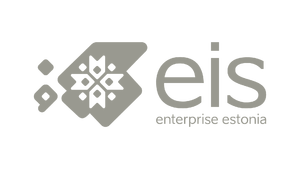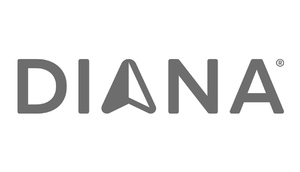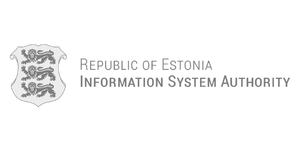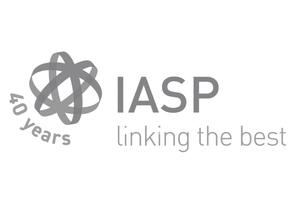06.06.2017
Haapsalu Neurological Rehabilitation Centre (HNRC): the most modern rehabilitation hospital in the Baltic States
Haapsalu Neurological Rehabilitation Centre (HNRC) is a hospital providing inpatient rehabilitation services to patients from all over Estonia. The hospital with more than 100 beds specialises in three major fields: therapy and rehabilitation of working-age and elderly patients with brain and spinal cord injuries as well as therapy and rehabilitation of children.
“The hospital was founded in 1958 after a polio epidemic occurred in Estonia. The Centre, now providing rehabilitation services to both children and adults, has undergone gradual development and expansion. It can be said that currently HNRC serves as a Centre of Excellence in neurorehabilitation – domestically as well as across all Baltic States. The hospital, mainly funded by the Estonian Health Insurance Fund, provides more than one third of the total volume of inpatient rehabilitation services covered by the Fund,” says Priit Eelmäe.
Cutting-edge technology used for rehabilitation purposes
Eelmäe explains that while the most valuable asset of HNRC is undoubtedly its employees, the hospital also stands out for its use of cutting-edge technology and state-of-the-art devices. “The goal of rehabilitation is the activation and verticalisation – mobilisation into a standing or sitting position – of the patient as early on as possible. To this end, we rely heavily on technological solutions and robotic equipment, and we are quite unique in this respect. HNRC impresses with the variety of rehabilitation equipment available. For example, the hospital has a robot-assisted gait therapy device LokomatPro by Hocoma, a verticalisation robot Erigo and a hand rehabilitation system called Armeo Spring. We use a technology launched on the market only last year – an exoskeleton which provides powered motion for patients who are unable to walk due to a spinal cord injury.
A verticalisation robot makes it possible to bring a patient who is unable to use his/her legs into an upright position. This device enables us to this activate the entire organ system and prevent such complications as osteoporosis, pneumonia, bedsores, etc. After therapy with Erigo – in order to make sure that a patient tolerates verticalisation – we can use a standing bed to lift the patient into a standing position together with a bed. This applies also to patients who are in the critical care unit. The next step is using LokomatPro, suitable for children and adults alike. The latter is basically a stationary robot that moves the legs of a patient who is attached to it. Patients with partial neurological damage can actively participate in assisted movements and see to what extent are their muscles involved in making walking movements. Another therapy option is a robotic exoskeleton – only five of them are currently used in Europe. With the help of such assistance a patient can walk around in a room or even go outside.
Robotics are used in the rehabilitation of patients with spinal cord injuries, brain trauma, or stroke, in both adults and children. Another robotic device is a hand rehabilitation system, designed primarily for stroke survivors.
We have the capability to test muscle strength and endurance, as well as run cardiac stress tests in grown-ups and children. Also, we can assess the performance ability of patients with spinal cord injuries.
The Centre also includes a clinical gait analysis laboratory for studying movement patterns in children. As a result, we are able to better adjust orthoses as well as assess whether injecting botulinum toxin into muscles is needed to reduce spasticity.
Future expansion prompted by export plans
Eelmäe says that as a state-established foundation, HNRC is meant to provide medical services to all residents of Estonia. Waiting times for acute and cito! cases may be up to two weeks and for chronic patients up to a year and a half. The hospital has 102 beds and its occupancy rate is excellent – 85%.
Currently, 2% of all patients are from abroad. However, according to assessments this figure could be as high as 10%. To increase the share of export, the healing environment is improved and plans are made to expand the hospital.
“In the future, HNRC could offer accommodation that is accessible to patients and where round-the-clock monitoring by doctors and nurses is not required, while we could better focus on active service provision,” Eelmäe explains.
Also, foreign partners may take interest in HNRC, a competent research institution, for the purposes of conducting research projects: “Here, we have the capability of testing various health technologies. We are a medical institution that conducts applied research, first and foremost with a view to developing the hospital’s services.
We participate in the Centre of Excellence in Health Promotion and Rehabilitation project and currently host its rehabilitation laboratory. Due to the use of robotic devices we are able to assess various health products in terms of their quality as well as usability in a clinical setting. Our testing capability is based on a sufficient number of patients,” he adds.
According to Eelmäe, HNRC stands out for having a sound quality system – EQUASS – in place and for using the FIM® instrument, or Functional Independence Measure, in long-term cases. “Incoming patients first undergo necessary tests, the results of which are then used to set rehabilitation goals. Later on, these targets help us assess rehabilitation efficiency and the need for extending therapy as well as patients’ functional independence. FIM® is an assessment instrument that can be used only after receiving specialised training and obtaining a licence. HNRC is one of the few institutions in the Baltic States that holds this licence,” Eelmäe points out.
Despite of the fact that modern rehabilitation is primarily based on interdisciplinary teamwork, it is, after all, physiotherapy that is the most popular rehabilitation service, according to data of provided by the Estonian Health Insurance Fund.
For 12 years, Priit Eelmäe worked at the University of Tartu where he developed and managed the physiotherapy curriculum. After that, he became the head of HNRC. He views physiotherapy as one of the key fields in rehabilitation, playing a major role in patients’ recovery. Eelmäe has not neglected his practical skills – in addition to being the hospital’s head, he still makes clinical visits and has an overview of rehabilitation patients at the centre.
“Natalie Beswetherick, board member at the Chartered Society of Physiotherapy (UK) and member of the EU working group of the European Region of WCPT, said during her recent visit to HNRC that she has never come across such a rehabilitation centre in the UK in terms of its equipment and working arrangement. Keeping in mind that the UK is viewed as a pioneer and quality leader in this field and that we can offer something an experienced professional has never seen elsewhere, we should be very proud of the therapy options available at our centre,” Priit Eelmäe comments.

















